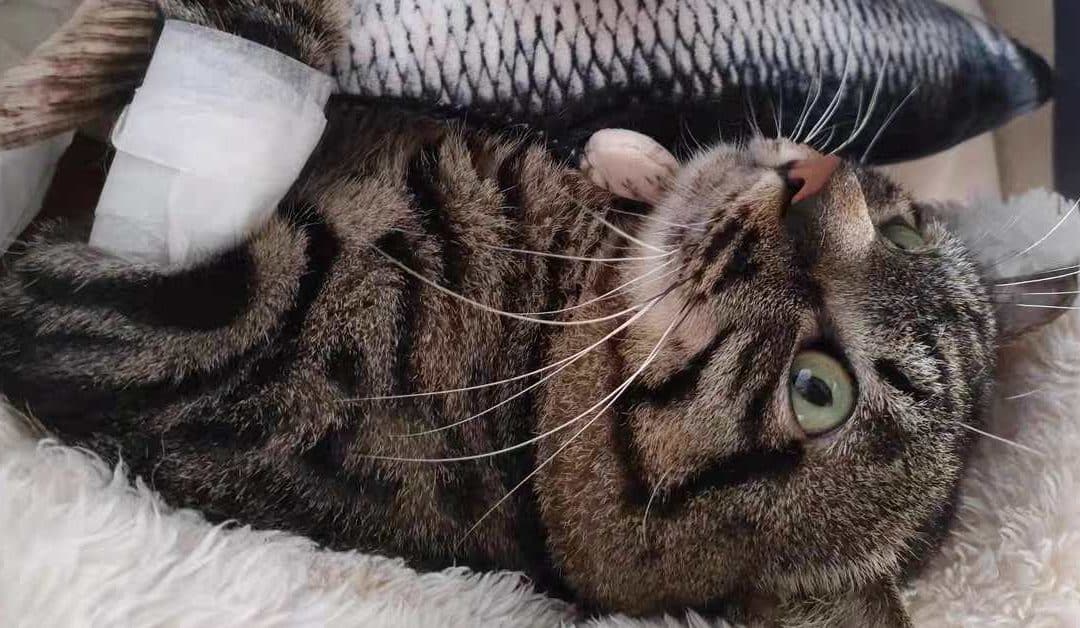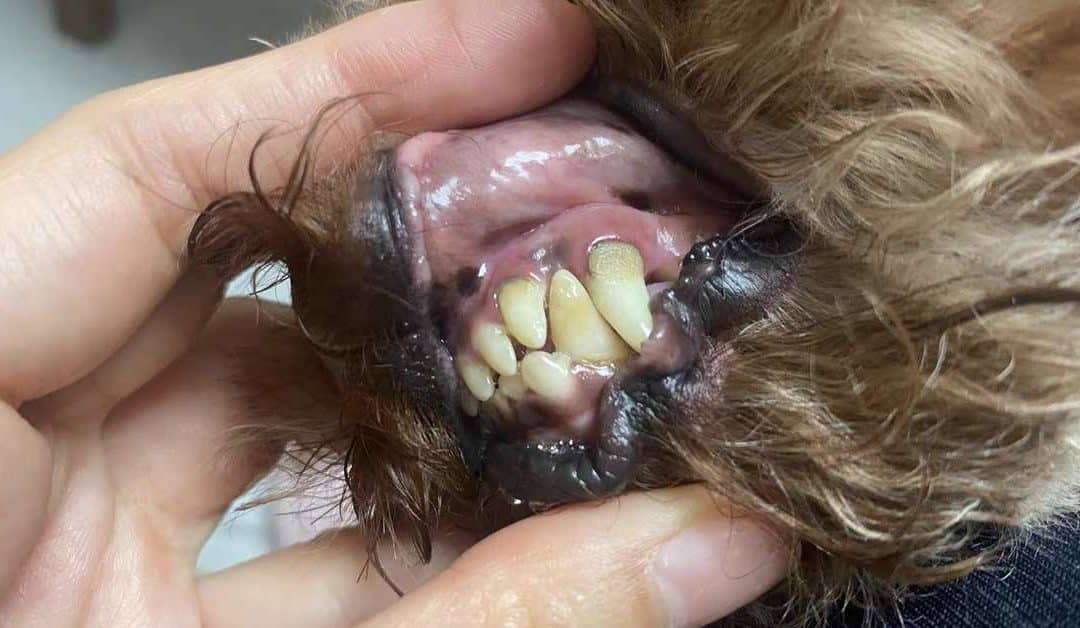
by Dr. Faith Whitehead | Nov 11, 2022 | Cat Cancer & Tumors, Dog Cancer & Tumors, Food & Health, Medicines & Therapies, Pet Story, Research and News
Euthanasia is the humane process of ending an animal’s life in order to relieve pain and suffering. The decision to euthanize a pet is a difficult one, but sometimes it is the most humane option. If you are considering euthanasia for your pet, it is important to consult with your veterinarian to discuss all of your options and to make sure that you are making the best decision for your pet. Veterinarians may perform euthanasia on pets for a variety of reasons. The most common reason is when a pet is suffering from a terminal illness and the owner does not want the pet to continue to suffer. Other reasons for euthanasia include when a pet is aggressive and poses a danger to others, when a pet is severely injured and cannot be healed, or when an owner can no longer afford to care for the pet.
There are a number of procedures that can be used for euthanasia in pets, and the support given will depend on the individual pet and owner. Some common procedures include injecting a lethal dose of an anesthetic agent, such as euthanasia solution, into the vein or muscle; asphyxiation using carbon dioxide; or administration of a high dose of barbiturates. The owner may be present during the procedure, and the pet will usually be placed on a table or in a quiet room to minimize stress. After the pet is euthanized, the body will be removed and the owner may be given time to say goodbye.
The pros of going forward with euthanasia in pets is that it can provide a peaceful death for a pet that is suffering from a terminal illness or has a poor quality of life. It can also spare the pet’s owner from having to witness the pet’s decline and suffering. The cons of going forward with euthanasia in pets is that it is a permanent solution and can be emotionally devastating for the pet’s owner. Some people may feel that euthanasia is a good idea in certain situations, such as when a pet is suffering from a terminal illness and is in pain, while others may believe that it is never acceptable to end a pet’s life. Ultimately, the decision of whether or not to euthanize a pet is a personal one that should be made by the pet’s owner in consultation with a veterinarian.
There are a few things to keep in mind when considering euthanasia for a pet. First, make sure that you have a good reason for doing so. Euthanasia should only be considered when a pet is suffering from a terminal illness or is in pain that cannot be alleviated. Second, be sure to consult with a veterinarian before making a decision. They will be able to advise you on whether or not euthanasia is the best option for your pet. Finally, be prepared for the emotional fallout that comes with euthanasia. This is a difficult decision to make, and it is important to be prepared for the grief that comes afterwards.

by Dr. Faith Whitehead | Nov 11, 2022 | Cat Cancer & Tumors, Dog Cancer & Tumors, Medicines & Therapies, Research and News
Drugs are an important part of treating dog tumors and cancers. Without drugs, many treatments would not be possible. Drugs are used to treat the tumor directly, as well as to treat side effects of treatments. Antibiotics are used to treat infections, and anti-nausea drugs are used to prevent and treat nausea and vomiting. Pain medications are used to control pain, and anti-inflammatory drugs are used to reduce inflammation. Many treatments are only possible using drugs. This includes chemotherapy, radiation therapy, and immunotherapy. These are treatments that are only available using drugs. There are other treatments available using drugs as well. This includes hormone therapy, targeted therapy, and biologic therapy. These therapies can be used in conjunction with other treatments to provide the most effective treatment possible.
There are a number of drugs that are effective in treating dog tumors and cancers. The most common are chemotherapy drugs, which work by killing cancer cells. Other drugs that may be used include radiation therapy, immunotherapy, and targeted therapy. Chemotherapy is the most common treatment for dog tumors and cancers. Chemotherapy drugs work by killing cancer cells. The most common chemotherapy drugs used to treat dog tumors and cancers are carboplatin, doxorubicin, and vincristine. Carboplatin is a platinum-based chemotherapy drug that works by interfering with the cancer cells’ ability to divide. Doxorubicin is an anthracycline chemotherapy drug that works by intercalating DNA and inhibiting topoisomerase II. Vincristine is a vinca alkaloid chemotherapy drug that works by binding to tubulin and inhibiting microtubule assembly. Radiation therapy is another treatment option for dog tumors and cancers. Radiation therapy works by damaging the DNA of cancer cells, which prevents them from dividing. The most common type of radiation therapy used to treat dog tumors and cancers is external beam radiation therapy. External beam radiation therapy is a type of radiation therapy that uses a machine to direct high-energy beams at cancer cells. There are two types of external beam radiation therapy: 1. Photon therapy: Photon therapy uses high-energy X-rays to kill cancer cells. 2. Proton therapy: Proton therapy uses beams of high-energy protons to kill cancer cells. Proton therapy is newer and may have fewer side effects than photon therapy.
Chemotherapy is a type of drug treatment that uses chemicals to kill cancer cells. Chemotherapy can be given intravenously (through a vein) or orally (by mouth). Chemotherapy is often used in combination with other treatments, such as surgery or radiation therapy. Chemotherapy is usually given in cycles, with each cycle consisting of a period of treatment followed by a period of rest. Chemotherapy is often associated with side effects, such as hair loss, nausea and vomiting, and fatigue. Radiation therapy is a type of therapy that uses high-energy x-rays or other particles to destroy cancer cells. Radiation therapy can be given externally, by aiming the radiation at the cancer from outside the body, or internally, by placing a radioactive substance in or near the cancer. Radiation therapy is often used in combination with other treatments, such as surgery or chemotherapy. Radiation therapy is often associated with side effects, such as fatigue, skin irritation, and diarrhea. Targeted therapy is a type of drug treatment that targets specific molecules involved in the growth and spread of cancer cells. Targeted therapy is often used in combination with other treatments, such as surgery or chemotherapy. Targeted therapy is often associated with side effects, such as fatigue, skin irritation, and diarrhea.
Immunotherapy is a type of drug treatment that uses the body’s immune system to destroy cancer cells. Immunotherapy can be given intravenously (through a vein) or by injection. Immunotherapy is often used in combination with other treatments, such as surgery, radiation therapy, or chemotherapy. For immunotherapy to be effective, cancer cells must have certain proteins on their surface. It is also important to know whether these proteins are present on the cells before starting immunotherapy. There are several types of immunotherapy, including: Monoclonal antibodies: Monoclonal antibodies are made in the laboratory to attach themselves to specific proteins on cancer cells. Once the antibody attaches to the cancer cell, it may help the body kill the cell. Monoclonal antibodies can be used alone or with other treatments. Monoclonal antibodies are made in the laboratory to attach themselves to specific proteins on cancer cells. Once the antibody attaches to the cancer cell, it may help the body kill the cell. Monoclonal antibodies can be used alone or with other treatments. T-cell transfer therapy: T-cell transfer therapy is a type of immunotherapy that uses T cells (white blood cells that fight infection) to help the body kill cancer cells. In this therapy, white blood cells are removed from the patient and sent to the laboratory. In the laboratory, the cells are changed to recognize and kill cancer cells.
About the author: Dr. Faith Whitehead; is a licensed veterinarian and researcher.

by Dr. Faith Whitehead | Nov 11, 2022 | Food & Health, Medicines & Therapies, Research and News
Allergic (atopic) dermatitis is the most typical skin condition observed in many veterinary facilities. This syndrome causes itching following exposure to environmental allergens (often airborne ones) (foreign proteins which induce allergies.) True food allergies in dogs are rather uncommon. Pets may have food intolerances, which are allergic reactions to non-nutrients in the diet (such additives), however it can be difficult to determine how common these reactions are. While giving your pet the healthiest, most natural, and holistic food you can is advised, dietary therapy is not a cornerstone in the treatment of itching dogs.
With a little adjustment, diets designed for animals with digestive difficulties may be helpful for animals with skin conditions. These customized meals are used to diagnose and manage food allergies in addition to monitoring any improvements in pets that suffer from skin conditions like atopic dermatitis. Remember that feeding your itching dogs the diet used to test and treat food allergies may result in improvement even if they don’t have a real food allergy.
A food trial is a specific, scientific approach to testing for food allergy. This can be done using either a homemade diet or a commercial diet that has been designed specifically for food trials. All other food sources, such as treats, snacks, table scraps, and flavored medications, must be removed during the trial. Your pet should be eating the trial diet exclusively for at least 8 weeks, although 12 weeks is currently recommended, because initial improvement may not be seen until week 8. After 8 weeks, it is usually safe to slowly introduce other foods back into the diet in a controlled manner. If you are unsure how to do this, please speak with your veterinarian or a veterinary nutritionist. If your pet has a food allergy, once the allergenic ingredients are removed, symptoms should resolve. If your pet does not improve, then food allergies are likely not the cause of the skin problems. The food trial may not be successful in some cases, and a food allergy may still be present. In this case, the skin symptoms may not respond to the trial diet because your pet may have an allergy to one or more of the ingredients in the trial diet.
When testing for food allergies, a hypoallergenic diet must be used. The most common varieties of hypoallergenic diets are hydrolyzed protein diets, where the protein has been broken down into smaller units that are less likely to cause an allergic reaction. Other diets may use novel proteins, such as venison or rabbit that are not commonly used in pet foods. After food allergies have been ruled out, a novel protein or hydrolyzed protein diet may be used to treat pets with food allergies and atopic dermatitis. A diet may be used for several months to years, or for the lifetime of the pet, depending on the severity of the food allergies. A diet may be used as a sole therapy or as a component of a more comprehensive plan to control allergies and skin disease. If a diet is used in combination with other therapies, it may be necessary to feed the diet for a longer period of time to see clinical improvement.

by Dr. Faith Whitehead | Nov 11, 2022 | Food & Health, Research and News
Dental care for pets is similar to dental care for humans. Pets need to have their teeth brushed, their gums massaged, and their teeth cleaned on a regular basis to prevent gum disease and tooth decay. Dental care is important for pets, just as it is for humans. Pets need regular teeth cleanings and dental checkups to prevent gum disease and other dental problems. Dental disease is caused by a build-up of plaque and tartar on the teeth. Plaque is a sticky film of food, bacteria, and saliva. Tartar is hardened plaque that has been left on the teeth for too long. Dental disease can cause pain and infection in the mouth, which can lead to other health problems such as heart disease and kidney disease. If a pet has a dental disease, you may notice that he or she has bad breath, drools excessively, has trouble eating, or is pawing at the mouth. Dental disease can also cause pain and infection in your pet’s mouth, which can lead to other health problems.
Poor hygiene may have an impact on everything. It may lead to several more illnesses throughout the body in addition to oral ones. The health of the animal depends greatly on its oral hygiene. It has an impact on every element relating to the animal. Good oral hygiene is a must for animals. Bad oral hygiene can lead to a number of oral problems. The most common oral problems include tartar buildup, plaque, gum disease and tooth decay. Each of these problems should be treated to ensure the animal’s health and well-being. Bad oral hygiene can cause a number of other health problems. These include infections in the sinuses and the respiratory system. These can cause infections in the lungs, digestion issues and other issues. Cavities are one of the most serious oral problems that can occur. Cavities are a hole in the tooth. They can cause pain, bleeding and can also lead to tooth loss. If a cavity is left untreated, it can lead to an infection in the gum line.
Age, general health, food, chewing activities, heredity, tooth alignment, grooming practices, and dental hygiene are a few factors that might cause gum disease in pets. Periodontal disease is a common condition that affects not only dogs, cats, and other animals, but also humans. A bacterial infection of the gums, periodontal disease is the leading cause of tooth loss in both humans and pets. A recent study from the National Institute of Dental and Craniofacial Research estimates that 47% of all dogs and 42% of all cats over the age of three are affected by some form of periodontal disease. Periodontal disease is a progressive condition that starts with gingivitis, a mild inflammation of the gums. If left untreated, gingivitis can lead to a more severe form of periodontal disease called periodontitis. Periodontitis is characterized by severe inflammation, bone loss, and eventually tooth loss. The most common sign of periodontal disease is bad breath. Other signs include red and tender gums, bleeding gums, and difficulty chewing.

by Dr. Faith Whitehead | Nov 11, 2022 | Cat Cancer & Tumors, Dog Cancer & Tumors, Medicines & Therapies, pet Chinese herbal medicine, Research and News
Some people may have had positive experiences working with Chinese veterinarians and find them to be trustworthy, while others may have had negative experiences or heard negative things from others and therefore do not trust them. Some people may believe that Chinese veterinarians are not as qualified as veterinarians from other countries, while others may believe that they are just as qualified. Some people may think that Chinese veterinarians are more likely to use traditional Chinese medicine (TCM) treatments, while others may think that they are just as likely to use western medicine treatments. Some people may think that Chinese veterinarians are more affordable than veterinarians from other countries, while others may think that they are just as expensive.
The Chinese have a long and proud tradition of veterinary medicine. For thousands of years, the Chinese have been using their knowledge of animal anatomy and physiology to treat a wide variety of animal diseases. Today, Chinese veterinarians are among the most highly trained and experienced in the world. They are able to provide expert care for a wide range of animals, from domestic pets to livestock. In addition, they are also skilled in the latest diagnostic and treatment techniques. As a result, Chinese veterinarians are able to provide outstanding care for their patients. The Chinese veterinarians have demonstrated outstanding capabilities in the treatment of a wide variety of animal diseases, ranging from infectious diseases to cancer. They have also shown great skill in the surgical treatment of animals. In addition, they have developed a number of innovative techniques for the care and treatment of animals.
In the Chinese society, veterinarians are seen as very reliable and frequently, doctors ‘ beliefs are considered the most valuable. They are perceived as extremely intelligent, principled, ethical and possessing limited knowledge. Elders may feel comfortable deferring to doctors yet at the beliefs of their kids. Thus, identifying the healthcare proxy would be seen as insignificant to some Chinese elders. Agreement among family members is respected, and the judgment of this physician will change and point end-of-life discussions, while the thought of the healthcare proxy, or ‘ sole advocate, ‘ may be seen as a barrier to the decision-making process. Veterinarians play a leading part in the well-being of our community by caring for animals and by utilizing their expertise and training to assist and improve human health, too.
In “Dogs in China: An Investigation into Pet Markets, Animal Welfare, Cross-border Trade and Quarantine,” report authors Emma Hockridge and Peter J. Li wrote, “The Chinese food and drug regulator, the Food and Drug Administration (CFDA), is responsible for monitoring the quality of veterinary drugs, and the Ministry of Agriculture (MOA) is responsible for the supervision of the use of veterinary drugs.” China’s veterinary profession has been growing in recent years. According to the China Veterinary Association, the number of practicing veterinarians has increased from about 50,000 in 1998 to more than 100,000 in 2013. According to the China Veterinary Association, the number of practicing veterinarians has increased from about 50,000 in 1998 to more than 100,000 in 2013. The veterinarians are also very professional. They know what to do and how to treat the animals. They also have the necessary supplies to treat the animals. All the veterinarians in China are highly qualified.
About the author: Dr. Faith Whitehead; is a licensed veterinarian and researcher.





